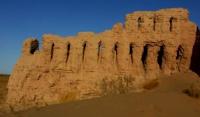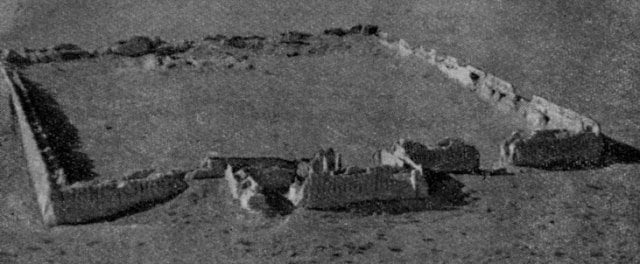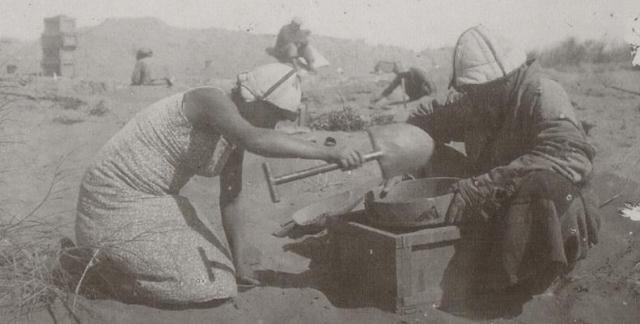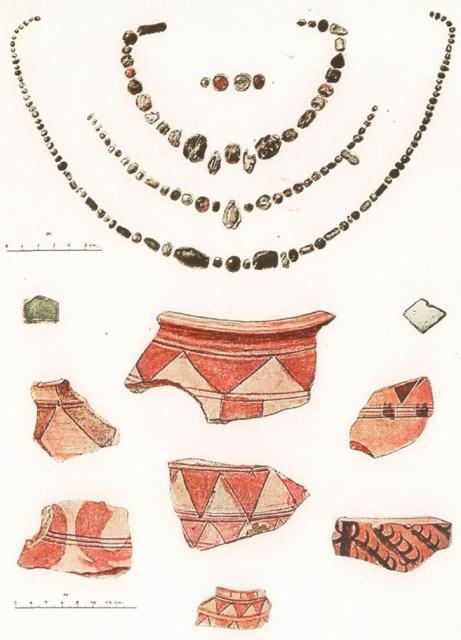Вы здесь
Dzhanbas kala fortress.



Trips around Karakalpakstan.
"This country is an independent and equal ally of the Khagan empire."
Byzantine ambassador Zemarkh, who traveled through the Turkic kaganate in 569 to his homeland and also visited Khorezm.
Ancient fortresses of Karakalpakstan.
The Dzhanbas kala fortress (Zhambaskala) is located in the southeastern part of the Kyzylkum desert, 9 kilometers southeast of the village of Dzhambaskala, 12.6 kilometers southwest of the village of Kokcha, 42.1 kilometers northeast of the village Turtkul in the Turtkul region of the Republic of Karakalpakstan.
Dzhanbas kala fortress, dates back to the IVth century BC. Ist century A.D. In 1946 - 1948 the fortress was first photographed from the air. Rectangular in plan, measuring 200 x 170 meters. The collected materials, mainly ceramics, are characteristic of the early antique (Kanguy) culture of Khorezm.
The founding of the settlement of Dzhanbas-Kala refers to the ancient period of the history of Ancient Khorezm, the so-called period of the existence of "a thousand cities" on the territory of the region. This period is divided into two stages: Kanguy and Kushan (according to the names of the states, which included Khorezm).
The emergence of the Dzhanbas Kala fortress belongs to the first - Kanguy stage. The date of the fortress was determined by S.P. Tolstov IV century. BC. - I century. AD Dzhanbas kala is the most northeastward fortress of the "Lands of Ancient Irrigation".
The fortress is a fairly clear rectangle oriented to the cardinal points. The relative preservation of the fortress was due to the fact that for many centuries the walls of the fortress were covered with dunes, which, to a certain extent, contributed to the preservation of the facade of the building.
The walls of Janbas Kala are almost 10 meters high, which indicates the scale of the building. At the same time, behind the outer wall there is another one, as if duplicating the main one, which was undoubtedly done to strengthen the strengthening of the fortress.
The outer wall is thickened downwards, the top is 1.30 meters wide, and the inner one is 1 meter wide. Narrow loopholes in the outer wall of Janbas Kala also confirm the military purpose of the fortress. A feature of the architecture of Dzhanbas Kala, which distinguishes it from other fortresses of this period, is the complete absence of corner towers, which is not typical for the East.
Also, another characteristic feature is the gatehouse, which has survived to this day. This feature made it possible to drive the attackers into a narrow corridor connecting the gateway to the gate, so that the defenders of the fortress could fire at the enemy from the loopholes.
The internal arrangement of the fortress is a fairly simple structure. The main (and probably the only) street of the city ran from the gate from north-west to south-east up to a large building, which was located at the southern gate.
On both sides of the street there were residential buildings-quarters. Each such block was divided into rooms. Approximately 150 rooms per block. As for the building at the southern gate of the fortress, according to the assumptions of archaeologists, it was a sanctuary for fire worshipers, the so-called "House of Fire".
The building was located on a hill at a height of 4.5 meters. Vivid evidence of this theory is the remains of ash discovered by archaeologists in the ruins of the corner room of the sanctuary. For several centuries, the inhabitants of the Dzhanbas Kala fortress repulsed the raids of the nomads.
However, in the 1st century AD, after an unsuccessful assault on the ingenious gates of the fortress, new invaders, using a ram, broke through the wall slightly to the west of the gate. A battle broke out inside: this is evidenced by the arrowheads found by archaeologists.
Probably, most of the inhabitants died in the battle, and the survivors were taken into slavery. After that, the fortress was not restored, it was gradually destroyed by rains and winds for 2000 years. Today, only massive walls remain from the former greatness of the Dzhanbas Kala fortress.
Geographic coordinates of the settlement of Dzhanbas-kala: N41 ° 51'30.01 "E61 ° 18'12.82"



Authority:
Dospanov October. “Improving the efficiency and sustainability of the functioning of the created Nizhne-Amudarya State Biosphere Reserve”. Nukus - Tashkent. year 2013.
Photos by
October Dospanov.







